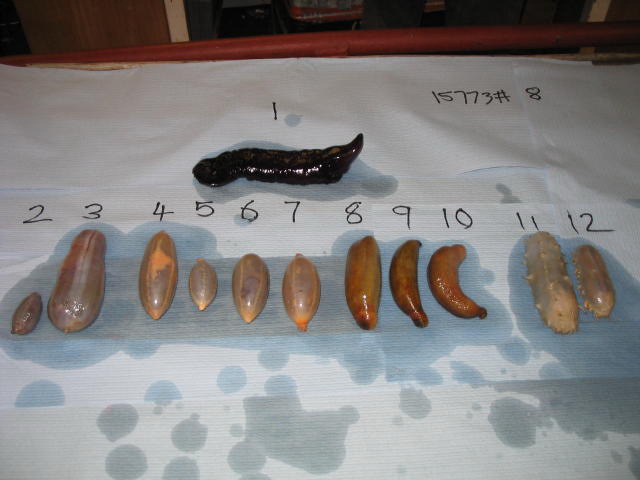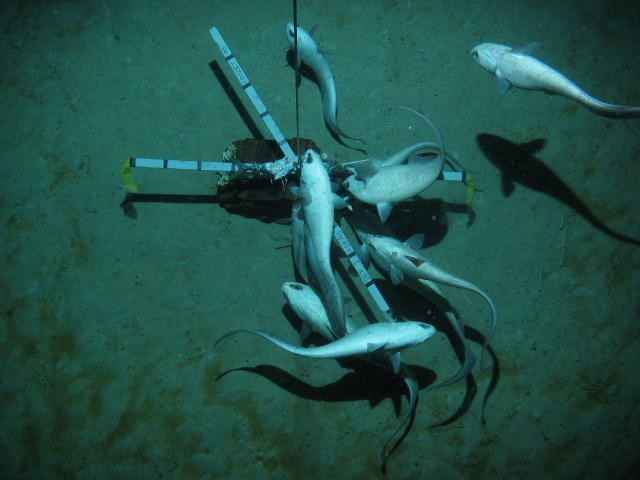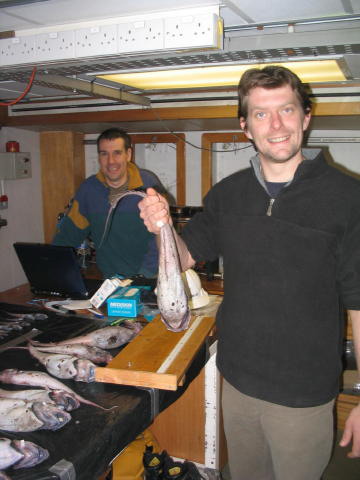For those of you who having been following the D300 Crozet
blog, you may have detected a note of frustration over the
past few days. Well that has largely evaporated today and
changed to mild euphoria. All because of a two buckets full
of sea cucumbers and some nice fish pics!
The day started with the recovery of a bottom trawl fished
overnight at 4200 metres water depth. Such trawls require
a lot of skill to do; because of their depth, they need
11.2 km of trawl cable out from the ship. As you can imagine,
setting the trawl on the sea floor, keeping it there and
then recovering is not easy. Luckily Ben is a trawling expert
and despite the fact that the trawl got snagged and was
damaged, we got an excellent catch. Although it is very
early in the day, it seems that the catch, particularly
that of invertebrate detritovores was dominated by holothrians
(sea cucumbers), and seems very diverse for such an abyssal
site. This is an important result, of which more later!

Just some (five) of the species found
at Crozet site M5
ROBIO was recovered following its deployment yesterday
and, as promised, has come up with some great photos of
fish feeding at the sea floor. The dominant species is Coryphaenoides
armatus, the abyssal grenadier, which also turned up
in the trawl. The fish arrived at the bait after about 25
minutes and in some numbers as you can see. The photographs
also show the remains of phytoplankton (known as "phytodetritus")
at the sea floor.

Coryphaenoides armatus arrive to feed
on bait (mackerel) set by ROBIO. Note the green material
(phytodetritus) at the bottom of the photograph

And one we caught in earlier!
The “phytodetritus” is the key to the Crozet
project. We hypothesized that its presence or absence is
an important driver for the diversity of the deep-sea community
below the bloom site (see blog 4-5/12/2005)
our site M5.
Where there is no bloom and presumably not much if any phytodetritus
(M6) we predict
that we will see a very different community. A long way
to go, but the first piece of the jigsaw puzzle is in place!